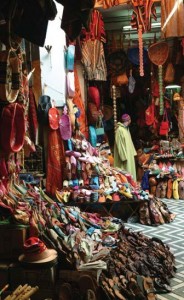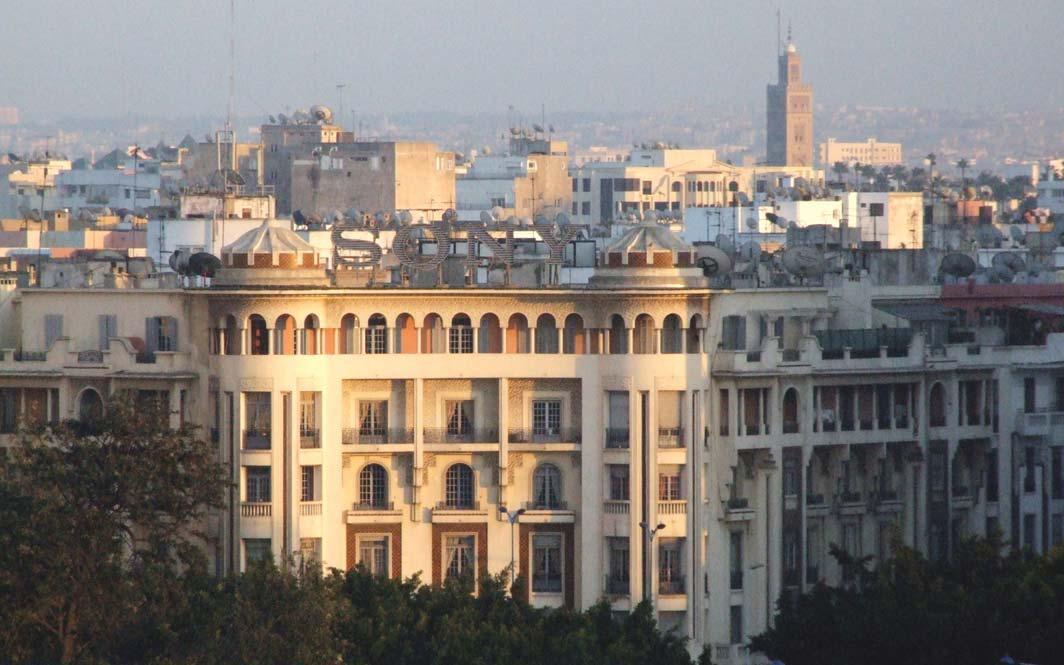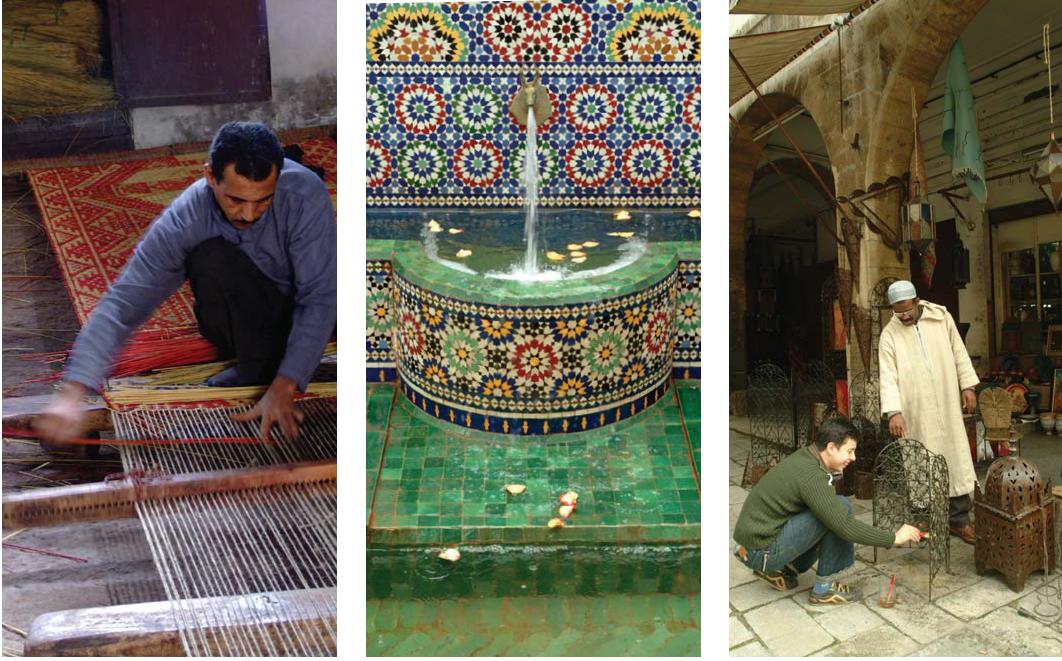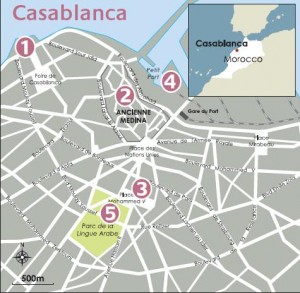 Casablanca: These days when people think of Morocco, they conjure up images of quaint riad hotels set deep in the medina of Marrakech, Meknes or Fès. They think of desert camel rides, of spices laden high on market stalls, of horse-drawn carriages moving through the yellow evening light. Ask someone if they have ever visited the coastal city of Casablanca, and they are likely to stick their nose haughtily in the air and declare, ‘That’s not real Morocco!’ Nothing could be farther from the truth. Without Casablanca (pronounced by locals as ‘Caza’), Morocco would quickly grind to a halt. It’s an economic engine that powers the life in the cities and the mountains, in the deserts and along the shores. I was first drawn to the city because it is so despised by foreigners. Wander the streets or pause in the shaded cafés on the long afternoons, and you won’t ever see a tourist – guaranteed. Casablanca is unwieldy and sprawling, and it keeps up with the times. But it’s built on a bedrock of tradition. Life there is more Moroccan than almost anywhere else. This may sound strange to anyone who knows their history. Although the first community was established by the Phoenicians in the suburb of Anfa, modern Casablanca was built by the French early in the twentieth century. They planned it as a showcase of imperial Gallic architecture – sweeping art deco boulevards lined with palm trees and fabulous villas, avenues of domed apartment blocks, gleaming in the coastal light. But scratch the surface and you find that Casablanca is a melting pot of people, drawn from all corners of the kingdom. Lured by the prospect of work and a good life, Casawis, as they are known, represent almost every hamlet, village, town and city of the country.
Casablanca: These days when people think of Morocco, they conjure up images of quaint riad hotels set deep in the medina of Marrakech, Meknes or Fès. They think of desert camel rides, of spices laden high on market stalls, of horse-drawn carriages moving through the yellow evening light. Ask someone if they have ever visited the coastal city of Casablanca, and they are likely to stick their nose haughtily in the air and declare, ‘That’s not real Morocco!’ Nothing could be farther from the truth. Without Casablanca (pronounced by locals as ‘Caza’), Morocco would quickly grind to a halt. It’s an economic engine that powers the life in the cities and the mountains, in the deserts and along the shores. I was first drawn to the city because it is so despised by foreigners. Wander the streets or pause in the shaded cafés on the long afternoons, and you won’t ever see a tourist – guaranteed. Casablanca is unwieldy and sprawling, and it keeps up with the times. But it’s built on a bedrock of tradition. Life there is more Moroccan than almost anywhere else. This may sound strange to anyone who knows their history. Although the first community was established by the Phoenicians in the suburb of Anfa, modern Casablanca was built by the French early in the twentieth century. They planned it as a showcase of imperial Gallic architecture – sweeping art deco boulevards lined with palm trees and fabulous villas, avenues of domed apartment blocks, gleaming in the coastal light. But scratch the surface and you find that Casablanca is a melting pot of people, drawn from all corners of the kingdom. Lured by the prospect of work and a good life, Casawis, as they are known, represent almost every hamlet, village, town and city of the country.
As a result, the spirit of the place is charged with the best that Morocco has to offer, and it overflows with traditional belief. There is no better way to tap into the underbelly of a place than to renovate a house. It’s a feat of endurance, a love affair that usually begins with a brief encounter. My love affair with Casablanca began when I bought a large rambling villa named Dar Khalifa – literally The Caliph’s House. Perched on the western edge of town, a stone’s throw from the crashing Atlantic waves, it was more than just an empty building. It was a place of mystery, a home with a soul.The three guardians who came with the property, as if by some medieval right of sale, told me that the mansion had lain uninhabited for almost a decade. In Europe, a boarded up house might attract squatters, but in Morocco such a place is a magnate for jinns. Muslims believe that when God created man from clay, He also fashioned another species from smokeless fire. Known as jinns, genies or jnun, these spirit-people live in a parallel world laid atop our own. Like us, they are born, they get married and die;but, unlike man, they can be visible or invisible and can transmute into any form they wish. Through the many dark months of renovation, I explored every corner of the city, in a search for master craftsmen, for antique furniture, and for witches to exorcise the legion of malevolent jinns. The city’s endless suburbs team with skilled people and with objets d’art.
At Ain Chock, I came upon a team of zelijiers, artisans who hand-cut mosaics in a thousand different shapes. In the vast junkyard at Derb Ghalif, I found mountains of architectural salvage from the French era – doorways and stained glass panels, carved bronze doorknobs and exquisite roll top baths. And on an outcrop of rocks in the sea, I happened upon the shrine of the Sufi Saint Abdur Rahman. Clustered there in a honeycomb of rooms live a sorority of witches and clairvoyants, whose sinister skills link them to the underworld. If Casablanca is beneath my feet, I know there’s not going to be a dull moment in the day. But this morning I was introduced to an English businessman who has lived there for three years or more. His face was tired, his shoulders rounded with boredom. He said that the city was a place of tedium, devoid of life. I told him about the junkyards, the witches and the dogs. He wondered if we were talking about the same Casablanca. I smiled because I knew we were. Sometimes there’s a world waiting to be seen right before you, but to appreciate it you must see it with fresh eyes.
Hotels and Resorts in Casablanca
- Hyatt Regency Film buffs with a strong sense of irony might like to check out the so-called Rick’s Bar, where the waiters take your (very expensive) drinks orders dressed in trenchcoats and fedoras.
- Kenzi Basma Located in the heart of the city centre, this hotel has a distinct European flavour to it, making it an ideal choice for the business traveller.
- Hotel Bellerive With views over the mighty Atlantic, the Bellerive is situated in a prime spot on the Corniche – one of the liveliest areas of the city, close to the Hassan II Grand Mosque.
- Le Royal Mansour Meridien Combining the charm of a grand European hotel with Moroccan hospitality, the Royal Mansour has long held a reputation for excellence and elegance. Positioned in the very centre of Casablanca’s main shopping and business centre, the hotel boasts views of the Hassan II Grand Mosque.
- Club Val D´Anfa Set among gardens that lead directly onto the beach, in Casablanca’s Corniche area. Guests can enjoy relaxing beside the outdoor pool, in the sauna, or with a massage during the day, and head to the bar for live music in the evening.
- Sheraton Casablanca Hotel and Towers A large chain hotel in the heart of the city, fully equipped for business travellers with wireless internet, dual-line phones and writing desks. And when you’re done working in the mobile office, you can work out in the well-equipped gym.
Top destinations in Casablanca
- Hassan II Mosque Looking out to the Atlantic, this imposing mosque is one of the largest in the Islamic world. It has space for 100,000 worshippers, but is best known for its majestic 200-metre-high minaret.
- The Old Medina Partly enclosed by the restored city wall, this area is a maze of narrow streets lined with bustling stalls and shops selling snacks and local bargains.
- Place Mohammed V This pleasant square, flanked by grandand majestic white government buildings constructed in the distinct French colonial style, offers respite in the heart of the city.
- The Port A fascinating cornucopia of sturdy oil tankers, modern cruise liners, pleasure boats and local fishing vessels, fill the deepwater quays of Casablanca’s port, the largest of the Maghreb.
- Parc De La Ligue Arabe The city’s largest public park is the Cathedrale du Sacré Coeur, eerily disused, but still a splendid example of Mauresque architecture.


